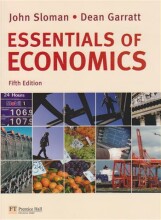Summary: Trade And Factor Mobility
- This + 400k other summaries
- A unique study and practice tool
- Never study anything twice again
- Get the grades you hope for
- 100% sure, 100% understanding
Read the summary and the most important questions on Trade and Factor Mobility
-
1 Interventionist and free trade theories
-
1.1 Mercantilism
This is a preview. There are 3 more flashcards available for chapter 1.1
Show more cards here -
Why is a trade surplus not necessarily beneficial?
A country with a favorable balance of trade is supplying the other country with more than it receives. -
What measures can the government take?
- increasing import barriers through higher tariffs and several non-tariff barriers.
- focus on import reduction. -
1.3 Free Trade Theory
This is a preview. There are 1 more flashcards available for chapter 1.3
Show more cards here -
Why do countries need to trade at all?
No nation has all the natural resources , geographic conditions, and technology necessary to produce everything they consume -
1.4 Theory of Absolute Advantage
-
What is Adam Smith's theory of absolute advantage?
A country's wealth is based on available goods and services for its residents rather than on gold. -
1.4.1 Absolute Advantage
This is a preview. There are 1 more flashcards available for chapter 1.4.1
Show more cards here -
Specialization increases efficiency because:
- Labor skills improve
- Less time is lost by notswitching production
- Itincentivizes better working methods -
1.5 Theory of competitive advantage
-
What happens when one country can produce all products at an absolute advantage?
Global efficiency gains may still result from trade if a country specializes in what it can produce most efficiently. -
1.5.1 comparative advantage
-
What is comparative advantage by analogy?
A country gains if it concentrates its resources on the commodities it can produce most efficiently, and then trades some of those for commodities produced abroad. -
1.5.3 Don't confuse comparative and absolute advantage
-
Explain why a country such as India may have simultaneously a comparative advantage and an absolute disadvantage in the production of the same product.
India may be less efficient (more expensive) in the production of smart phones compared to a country such as Vietnam. However, the opportunity costs of producing smart phones in India are lower compared to the opportunity costs in Vietnam. -
1.6 Theories of specialization: Some assumptions and limitations
-
What are some limitations to specializations?
- full employment
- economic efficiency
- divisions of gains
- transport costs
- insufficient demand
- Statics and dynamics
- Services
- Production Networks
- Mobility -
2 Theories to explain national trade patterns
-
2.1.1 Theory of country size
-
Bigger countries (in terms of land mass) differ in several ways from smaller countries. They:
- Tend to export a smaller portion of output and import a smaller part of consumption
- have higher average transport costs for foreign trade
- Higher grades + faster learning
- Never study anything twice
- 100% sure, 100% understanding
































